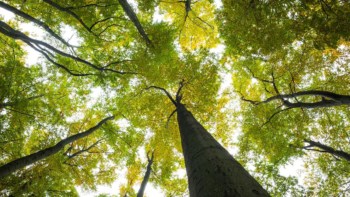Ozone may be a life-saver in the upper atmosphere where it shields us from harmful ultraviolet rays, but closer to the ground it is a pollutant causing asthma in humans and stunted growth in crops. In large cities such as Los Angeles, ozone forms a key ingredient of smog, produced when sunlight reacts with car exhaust and other fumes. Ozone can also reach ground level, however, in smaller amounts through “intrusions” from the stratosphere. Now, Wayne Hocking at the University of Western Ontario and other physicists in Canada have shown that it should be possible to forecast when and where such ozone intrusions occur (Nature 450 281).

Hocking and colleagues came to their conclusion by monitoring the position of the tropopause — the region separating the troposphere, which extends from ground level, and the stratosphere — at stations in Montreal and Walsingham in Canada. To do this they used “windprofilers”, a type of radar operating at frequencies around 50 MHz that detect whether the air is stable, as in the tropopause, or turbulent. They also released over 100 balloons lifting devices called ozonesondes, which continually sample the air for ozone levels as they rise upwards.
The tropopause varies in altitude between 7 and 28 km, but usually resides at around 8 to 10 km. The researchers found that, on occasion, the tropopause altitude changed rapidly — a drop followed by a quick climb — which would be followed by a significant intrusion of ozone into the troposphere, sometimes all the way to ground level. According to Hocking, scientists should therefore be able to use radar to give a forewarning, 12 hours to two days in advance, of ozone intrusion events that might reach the ground. This would enable people with breathing difficulties or with eyes prone to watering to keep indoors.
Martyn Chipperfield, an atmospheric scientist at the University of Leeds in the UK, told physicsworld.com that the study also shows it could be possible to find out how often ozone intrusions occur and thus how much they contribute to the amount of ozone in the troposphere. However, he added that this would also require knowledge of the mass of transported ozone during an intrusion event, which is not indicated in Hocking and colleagues’ study. “That would be a challenge,” he said.



